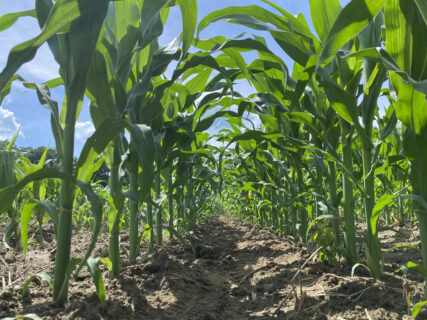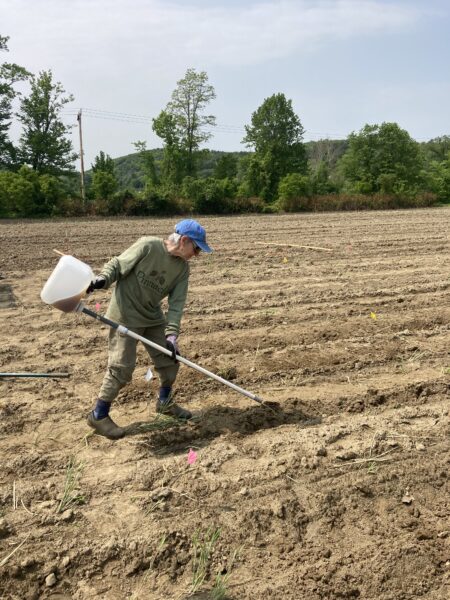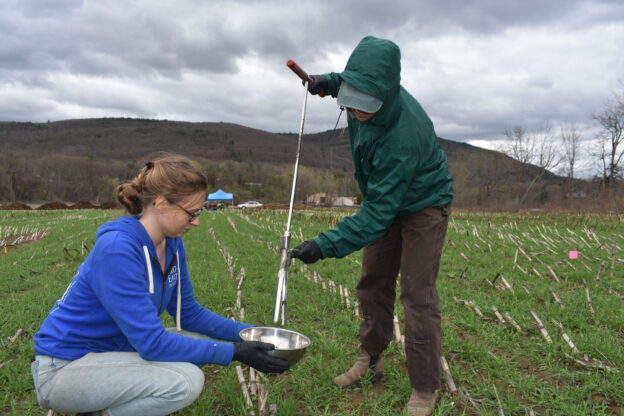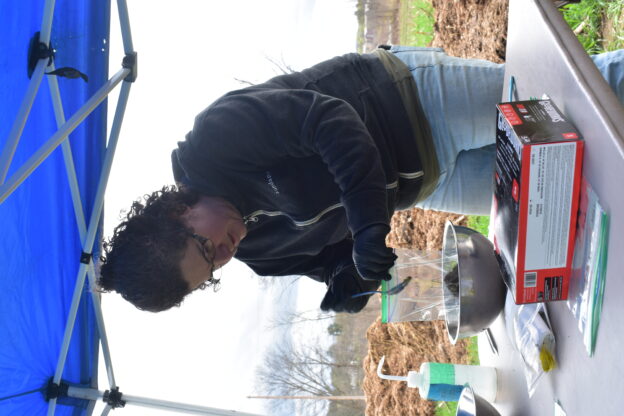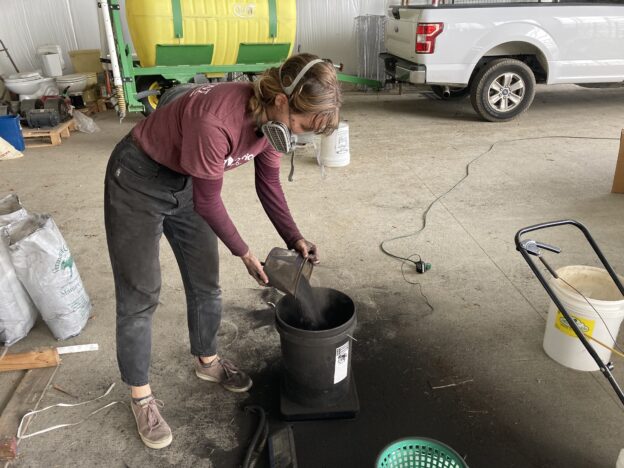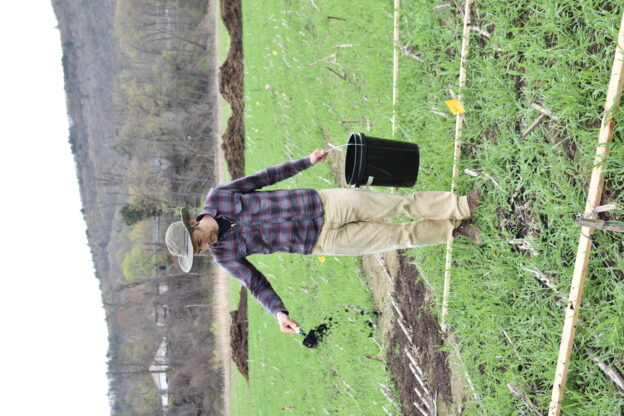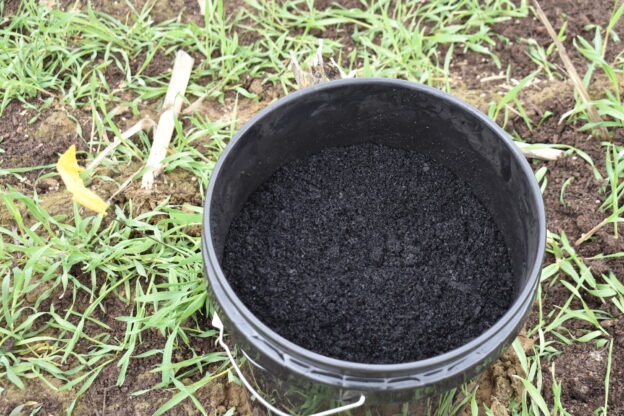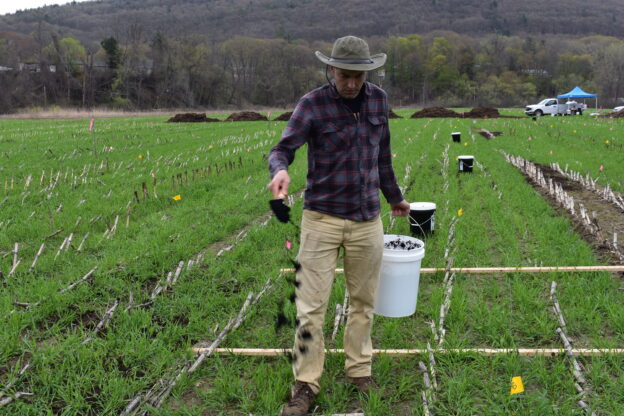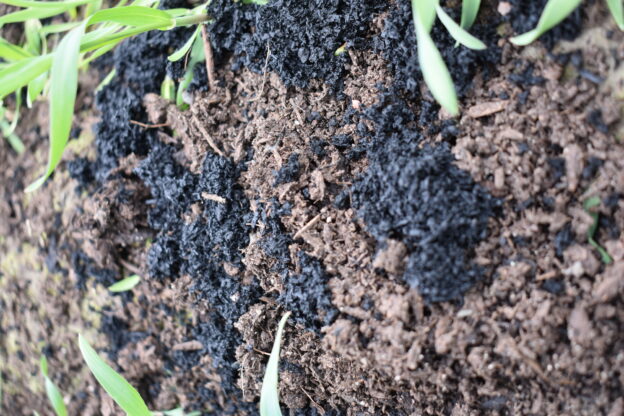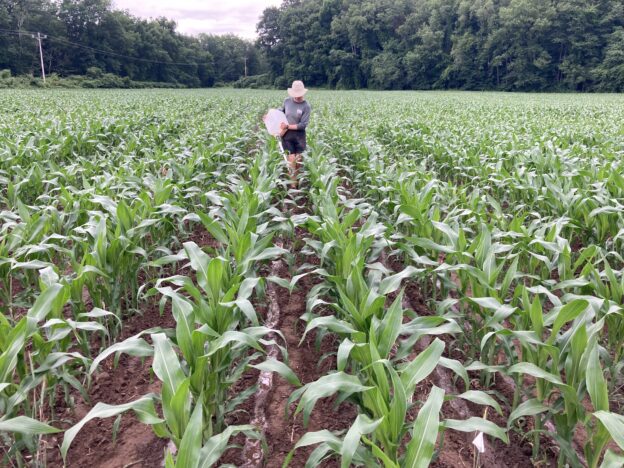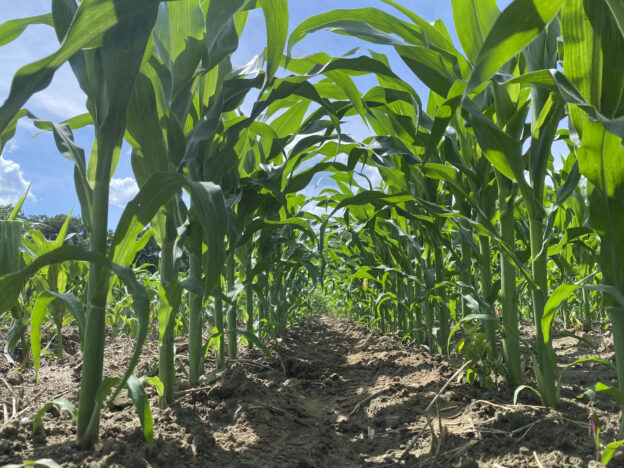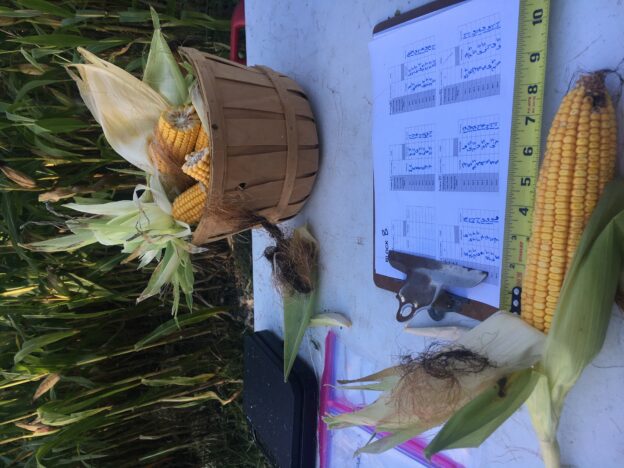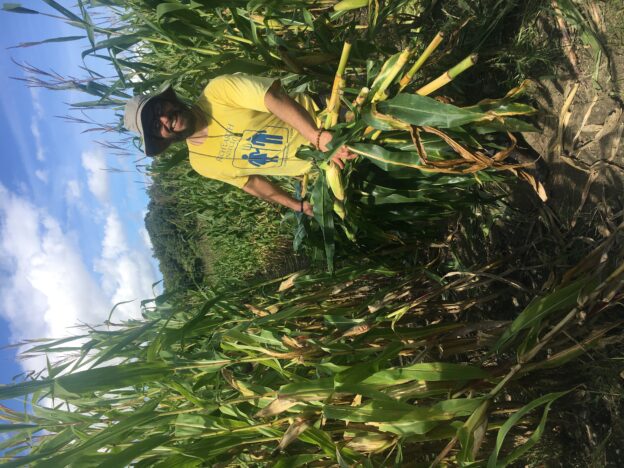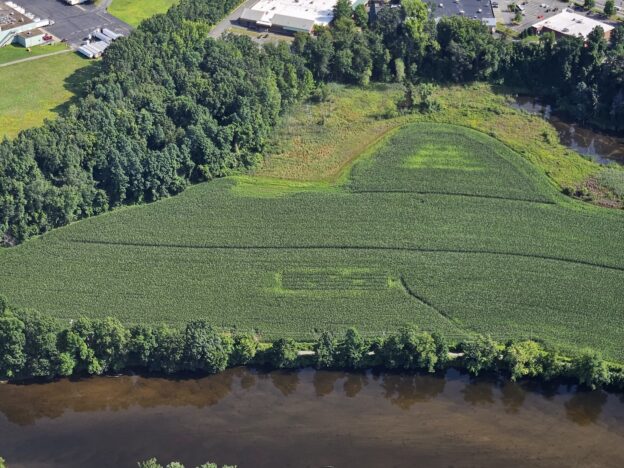Biochar from Biosolids and Source Separated Human Urine: Soil Health Impacts and Farmer Perspectives
Funder: USDA Sustainable Agriculture Research and Education (SARE): Research for Novel Approaches in Sustainable Agriculture
Collaborators: Cornell Cooperative Extension
Project Goals
In this research project, we are exploring soil health effects and farmer perspectives of soil amendments derived from a range of waste streams. Many farmers are interested in these amendments to reduce expensive or energy-intensive farm inputs and to build healthy soil, but are concerned about contaminants in these materials, particularly those found in biosolids. Biosolids–solids recovered from wastewater treatment–are commonly applied as a recycled, nutrient-rich soil amendment. However, biosolids may contain harmful microcontaminants such as PFAS that pose health risks when applied to farmland. Transforming biosolids into biochar—a charcoal-like material that can be made from any organic material—could potentially eliminate these contaminants. Recent research suggests that the high heat used in the pyrolysis process can break down harmful substances like PFAS, making biochar a potential alternative to traditional biosolids for agricultural use.
This project examines soil amendments including urine, biochar made from biosolids, biochar made from other wood chips, compost, and various combinations of these. These recycled amendments may each affect different aspects of soil health. Urine is a source of readily-available nitrogen, while biochar provides the soil with slow-to-break-down carbon, and may increase soil nutrient retention and soil structure. Compost contributes bio-available carbon (i.e. available to microbes) and slower to release nitrogen and other nutrients. The benefits of biochar are known to be enhanced further when biochar has been charged with nutrient rich materials before use, such as urine. Thus, using both the solid and liquid human waste products could be a way to reduce the need for external synthetic fertilizers and use both forms of waste simultaneously. In this study, we are exploring the impact of each treatment, and learning how farmers, gardeners and other land managers think about the potential value of these amendments.
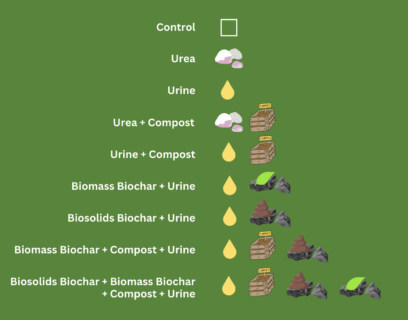 Methods
Methods
Field Trials
From 2023-2025, we are applying the soil amendments described above, in various combinations, to silage corn planted at Jake Hamilton’s field by the West River Trail in Brattleboro, VT. A parallel experiment is being conducted by research partners at Cornell Cooperative extension at the Long Island Horticultural Farm. We are measuring corn yield and indicators of soil health to compare between crops receiving recycled fertilizers, synthetic fertilizer, and no fertilizer. For plots receiving biochar soil amendments, biochar was charged (soaked) with urine one week prior to application. In addition to the analyses performed in this project, soil microbial analysis will be performed with funding from a related project.
Social Research
The social research for this project builds on our previous SARE projects, which documented strong farmer interest in and adoption of source-separated human urine as fertilizer. However, we also identified concerns about urine related to potential soil health effects from residual pharmaceuticals, and concerns about biosolids related to microcontaminants, organic pollutants, and heavy metals. Our goal is to understand how farmers, gardeners and other land managers think about the potential value of these novel amendments, and determine what further research or best practices may be required to enable adoption of these products by farmers in the Northeast. Social research will include 20 farmer interviews, a survey, and farm field days.
Results
So far, all recycled soil amendment recipes have resulted in comparable yields to synthetic fertilizers and greater yields than controls.
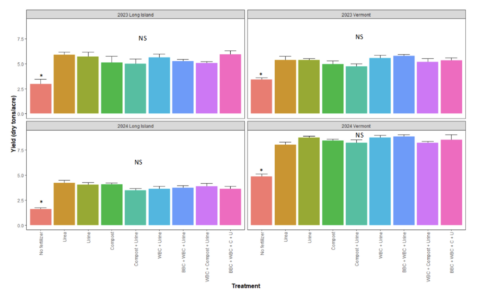
So far, all recycled soil amendment recipes have resulted in comparable yields to synthetic fertilizers and greater yields than controls.

